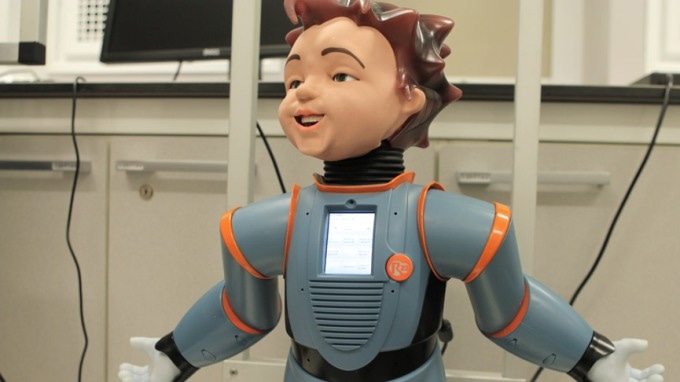Jul 27 2016
Sheffield is at the center of the UK’s robotic research, with the potential to become the leading city in the field worldwide.
 The Zeno R25 robot can show different emotional expressions and help with balance learning tasks. (CREDIT: The University of Sheffield)
The Zeno R25 robot can show different emotional expressions and help with balance learning tasks. (CREDIT: The University of Sheffield)
Sheffield Robotics analyze interactive robots and creates safe, verifiable robotic technologies. This research institute is socially responsible and works with the public sector and businesses to improve the economy, industry, and lives.
The introduction of the EPSRC UK Robotics and Autonomous Systems Network (UK-RAS Network) has paved the way for further improvements in the UK’s research in the robotics field, of which Sheffield robotics experts will play a significant part.
Improving the social and economic influence of autonomous systems and robotics on a variety of sectors has been the major focus of the institute. These sectors include healthcare where the elderly population needs assistance, or in extreme and harsh environments and advanced production.
Teaching Humans a Lesson
Sheffield Robotics' latest project aims to develop robots that can inspire and educate children. The aim of the new project - Expressive Agents for Symbiotic Education and Learning (EASEL) - is to develop humanoid robots that can create a new tutoring system.
Although a lot of technological advancements have been made in the area of teaching systems, the IT applications that are available for teaching and instructing today have a lot of disadvantages. The EASEL team, headed by Professor Tony Prescott, a cognitive neuroscientist, believes that the humanoid robot brings the social interaction aspect into the classroom, a feature absent in the other classroom technologies.
Rather than being a substitute for the human teachers, the humanoid tutor has been developed to assist them. With its patience, uncomplicated and understandable communication, and ability to repeat tasks, the humanoid can support its human counterpart in the teaching process. The use of the humanoid will also improve the critical thinking and developing skills of young learners.
The humanoid tutor is set to be piloted in local schools in Sheffield city and will lay the foundation for humanoids as potential tutors. When these robots become commercialized they will add to the learning experience of all children.
Building Intelligence in Robots
Sheffield scientists are designing robots that can exhibit polite behavior, as well as complete independence in hostile environments.
The Department of Automatic Control and Systems Engineering researchers are developing robots that are capable of working with humans, participate in search and rescue missions, and work in environments that are not suitable or hazardous to humans.
Creating Responsible Robots
In addition to developing robots, the researchers at Sheffield also focus on basic queries that arise as a result of the increased advancements in the automation in people’s daily lives and the various effects of robotics.
Sheffield’s Emeritus Professor of artificial intelligence and robots, Noel Sharkey is the chair person and co-founder of the Foundation for Responsible Robotics.
We are rushing headlong into the robotics revolution without consideration for the many unforeseen problems lying around the corner. It is time now to step back and think hard about the future of the technology before it sneaks up and bites us when we are least expecting it. We must strive for responsible and accountable developments in robotics without stifling innovation.
Noel Sharkey, Professor, University of Sheffield
Robots in the Body
Saving lives in one of the many situations where robotic technology can be used.
The Department of Automatic Control and Systems Engineering Faculty Dr Dana Damian has been a part of a collaborative project where a small origami robot encapsulated in a capsule is administered into the body. The robot can unfold inside the body and can then be directed using external magnetic fields to traverse the walls of the stomach, for instance, to patch a wound or extract a swallowed button battery.
Sheffield Robotics Intro